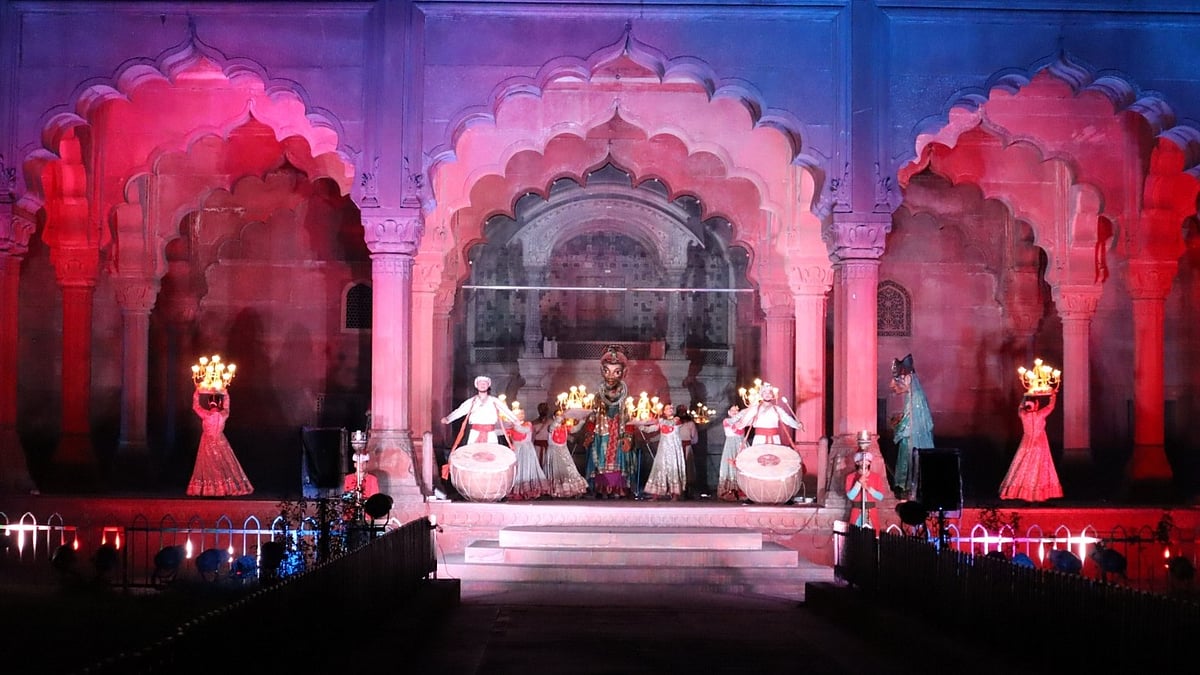In Photos: How Red Fort Centre & 'Jai Hind' Show Bring History Back to Life
Built by Shah Jahan, Delhi's Red Fort has witnessed many chapters of Indian history.

advertisement
A 19th-century British barrack is a two-storey structure called the Red Fort Centre today. It houses the history of the iconic Red Fort, narrated through immersive illustrations, a 360-degree projection theatre, and modern art.
(Photo courtesy: Kritika Sah/The Quint)
The museum takes viewers to all the main locations of the Red Fort. It is divided into four sections.
(Photo courtesy: Kritika Sah/The Quint)
Safar: Narrating the formation of Lal Quila and Shahjahanabad. This section explains the history behind the three prominent gates of Red Fort: the Lahori Gate, the Delhi Gate, and the Khizri Gate.
(Photo courtesy: Kritika Sah/The Quint)
Lahori Gate: Facing the direction of Lahore (now in Pakistan), the gate is situated on the west side of the Fort. It is now used as the main entrance.
Delhi Gate: The secondary gate to the Fort, it also receives its name from the older city it faced.
Khizri Gate: This signifies the route once used by the Mughals to go to the bank of the river Yamuna.
(Photo courtesy: Kritika Sah/The Quint)
The second part of the Red Fort Centre is called Zindagi. It explores the architecture, tradition, culture, and lifestyle of the people who lived in the Fort.
(Photo courtesy: Dalmia Bharat)
From Shah Jahan who built the Red Fort in 1638 to Bahadur Shah, the last known emperor to rule in the Mughal empire – here's the family tree of the Mughals.
(Photo courtesy: Kritika Sah/The Quint)
The third part of the Red Fort Centre is called Tareekh. It features a detailed calendar of the Mughal era as well as the Indian freedom struggle.
(Photo courtesy: Kritika Sah/The Quint)
The concluding section of the museum contains the Unity Room and the Pledge Room. The infinite Ashok chakras on the mirrors represent the sacrifice of the Indian soldiers.
(Photo courtesy: Kritika Sah/The Quint)
The light and sound show, Jai Hind, voiced by Amitabh Bachchan and Kabir Bedi, presents live performers and a projection mapping describing the events that unfolded in the courts of the Fort.
Both the Centre and the show is the brainchild of the Dalmia Bharat Group, which 'adopted' the monument under the government’s ‘Adopt a Heritage’ scheme.
(Photo courtesy: Kritika Sah/The Quint)
The walk-through theatrical performance begins at the Naubat Khana, to Diwan-e-Aam, and unfolds entirely in Diwan-e-Khas – the three most prominent locations at Red Fort.
(Photo courtesy: Kritika Sah/The Quint)
Inaugurated in January 2023, the show is brought to life by a troupe of 60 performers and actors. Bringing history alive on the stage, it narrates the tussle of power between Dara Shikoh (the eldest son of Shah Jahan) and Aurangzeb (Dara's younger brother), the loot in Shahjanabad and Red Fort by Nadir Shah, the rise of the Marathas, and finally, the beginning of Indian freedom struggle.
(Photo courtesy: Kritika Sah/The Quint)
Recently listed among the top five world's best light and sound shows by National Geographic, 'Jai Hind' is live from Tuesday to Sunday, 7:30 pm to 8:30 pm.
(Photo courtesy: Kritika Sah/The Quint)
Standing since the mid-17th century, the walls of Lal Qila, or the Red Fort, hold several stories. Stories of power, kings and queens, wars and love, and of course, patriotism.
Built by Shah Jahan, Delhi's Red Fort has witnessed many chapters of Indian history.
Narrating those chapters, the Red Fort Centre and 'Jai Hind', a light and sound show performance, bring history alive.